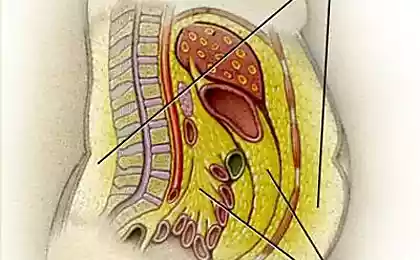277
Keto-dieta

A ketone or ketogenic diet is a low-carb diet high in fat and moderate in protein. Its essence is that a special way of nutrition should force the body to use as the main source of energy fats that have accumulated in it. Adherents of this diet claim that within 6 days they managed to lose up to 4-5 kilograms.
The diet owes its name to the so-called ketone bodies (ketones) formed against its background, which are direct products of the breakdown of fats. And the state of the body that produces ketone bodies is called ketosis.
It is worth noting that although ketogenic diets have many supporters, to date, data on clinical studies in this area are very limited and are still under study. Therefore, before deciding to sit on it, be sure to consult your doctor.
Types of keto diets
We have already talked about the principles of the cyclic ketogenic diet (CKD), so consider other options for ketogenic diets: the standard ketogenic diet (SCD) and the targeted ketogenic diet (TCD).
The standard ketogenic diet is the simplest, basic version of this type of diet. It does not involve periods of replenishment of carbohydrate reserves. It is a linear diet that is characterized by a stable influx of ketogenic nutrients, that is, moderate to high intake of protein, large amounts of fat and extremely low carbohydrates.
As practice shows, CDS is more suitable for those who lead a predominantly sedentary lifestyle, or for those who do not train too intensively.
A targeted ketogenic diet is characterized by a short-term intake of carbohydrates during the training window. The task of TKD is to fill the body with a certain dose of glucose to increase physical performance. TKD will be acceptable for those who train intensively several times a week and begin to feel a deterioration in performance with prolonged restriction of carbohydrate foods. This type of diet is given an advantage and athletes with experience, who are able to get the maximum benefit from a small inflow of carbohydrates.
What kind of keto diet is right for you, you should decide depending on the goal and the individual reaction of your body.
The standard weight ratio of fat to protein with carbohydrates for the keto diet is 4 to 1. However, if the goal is to lose weight, the coefficient of this ratio should be shifted towards increasing the number of proteins and decrease in relation to fats. To do this, it is necessary to exclude high-carbohydrate foods from the usual daily diet, and increase the amount of consumption of foods rich in fats.
It is also worth noting that most fats from the usual diet consist of long-chain fatty acids, and medium-chain fatty acids are more suitable for the keto diet. Coconut oil, for example, will be an excellent helper in this case, since it is not only rich in medium-chain fatty acids, but also able to provide half of the necessary daily calories.
Like most other diets, the keto diet has its own list of strictly forbidden foods. These include:
- Grapes;
- pasta;
- bread and bakery products;
- sugar;
- Potatoes;
- beets.
- Carrots;
- grapes (sweet);
- bananas;
- Mangoes?
- Dates;
- Persimmon;
- carbonated and alcoholic beverages.
At the same time, while you are on a keto diet, you will have to love:
- fish (especially fatty);
- poultry and animal meat;
- fatty dairy products (milk, kefir, cream, cottage cheese, cheese);
Eggs (whole or only proteins);
- oils (preferably vegetable);
- nuts and nut pastes;
- vegetables (especially green - squash, cucumbers, lettuce, broccoli, celery, cauliflower and white cabbage, etc.).
Regardless of the type of ketogenic diet you choose, experts advise you to start “entering” it with fasting, which can last up to three days. At this time, you can only drink boiled water. At the same time, physical activity these days should be significantly reduced, since you may experience malaise, dizziness and general weakness.
After one or more days of fasting, a daily diet may look, for example, as follows:
1st meal:
Scrambled eggs (three eggs – about 180 g)
Protein cocktail (one serving - 30 g)
Cheese toast (50g)
2nd meal:
Brown rice (30g)
Chicken breast (fried or boiled - 170 g)
Cheese (30g)
3rd meal:
Protein cocktail (one serving - 30 g)
Almonds (30 g)
4th meal:
Salmon (130g)
Brown rice (30g)
Salad (30g)
5th meal:
Cotton cheese (100g)
Casein (30g)
In total, with such a diet, you will gain about 1950 calories per day, of which protein will be about 210 g, fat - about 90 g, and carbohydrates - about 80 g.
You can overcome the feeling of hunger between meals, for example, by eating cottage cheese or yogurt.
It is worth bearing in mind: if you want to gain muscle mass, you need to “go through” calories, if the goal of losing weight is “not to get it.” There is no universal clear formula here – it is necessary to take into account age, weight, state of health, etc.
If you choose TKD for yourself, then you will need to listen to your body, to how it reacts to changes in your diet. After that, you can, if necessary, determine the optimal time for additional “feeding” yourself with carbohydrates. This can be, for example, an additional intake of carbohydrate foods before and after exercise. The main thing is that the amount of additional carbohydrates consumed is optimal for your short-term performance, but do not abuse them.

The advantages of the keto diet, of course, should be attributed to the rapid loss of fat subcutaneous tissue without loss of muscle mass. In addition, the above types of diets allow you to control appetite. After all, the keto diet eliminates the feeling of hunger that is inherent in other diets. This is due to the fact that fatty and protein foods, which are saturated with the keto diet, allow you to completely suppress it.
However, the keto diet is categorically contraindicated for diabetics, people suffering from liver, kidney, cardiovascular and digestive systems, as well as lipid metabolism. Too many ketone bodies in the blood can lead not only to a sharp deterioration in health, but even to death. And since glucose deficiency affects brain activity, a keto diet is undesirable for knowledge workers.
As you can see, the keto diet on one side only seems quite easy and simple. On the other hand, it requires a lot of self-control and special attention to your health, since a fanatical attitude towards it can end quite badly, for example, the appearance of kidney stones or an increase in cholesterol and triglycerides.
Source: fitfixed.com
Writer uh, Zadie Smith: the New story always begins with enthusiasm and ends in shame
How to choose a good mayonnaise























